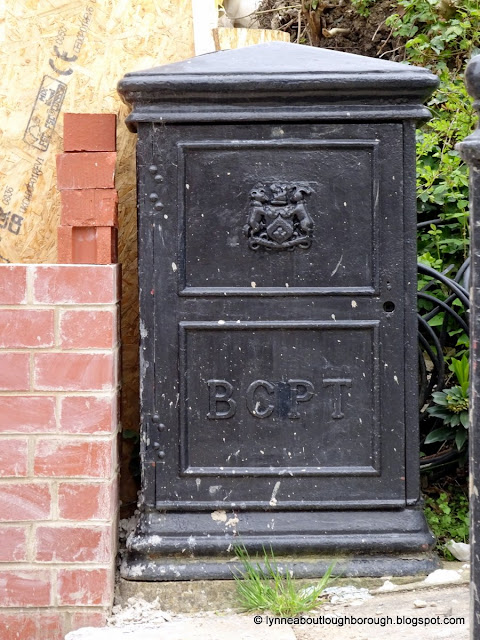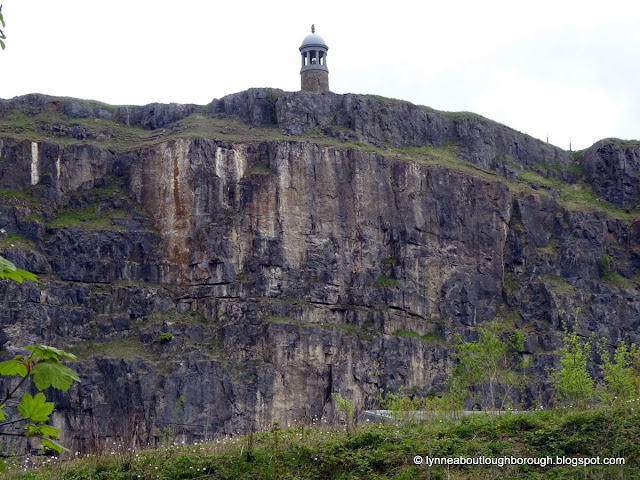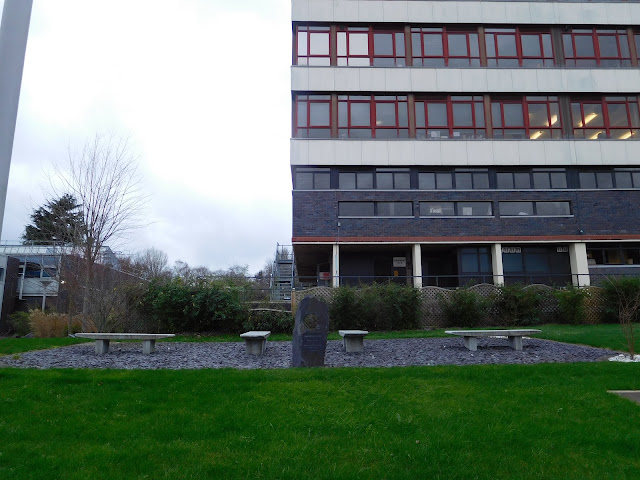So, for letter ‘Z’ in the ‘April A-Z Blogging Challenge’ I really am spoilt for choice!! In ‘A-Z of Loughborough’ I wrote about one of our twin towns, Zamosc, about our Zenobia perfume factory, and the Zoo Spartans fish and chip shop, which, of course, is really the 300 Spartans! Should I simply repeat these here?
For this blog post, I also considered writing about Zodiac Toys which used to be in the shopping centre, or turning things round a bit and writing about local man, Zachariah Onions!
However, in the end, I’ve decided to go with Zeppelins, as there is always something to say on the topic, despite over the past few years, me thinking I’ve written everything I ever thought I could about the Zeppelin raid on Loughborough – and I’ve even had a guest blogger contributing on the topic! And I’ve been to several talks about the raids further afield, and I even managed to mention Zeppelins in one of my posts about Loughborough’s letter boxes! There are some links to previous posts towards the end of this post.
So, for a slightly different angle, today I’ve chosen to transcribe word-for-word a few newspaper reports – from just before the raid on Loughborough, a couple of months after the raid, and about 6 months afterwards. Please note that these are articles of their time, and I have not analysed them, nor tried to put them into any context other than as newspaper reports, contemporaneous with the Zeppelin raids.
Just a few weeks before the Zeppelin raid that took place over Loughborough on 31st January 1916, the following report appeared in the ‘Western Evening Herald’, Plymouth, on January 3rd 1916:
“THE WAR WILL NOT LAST TWO YEARS.”
COUNT ZEPPELIN SAYS VICTORY IS IN SIGHT.
Paris. Saturday – Count Zeppelin, in a speech which he delivered recently at Dusseldorf, is reported by the local newspapers as saying:
“This cruel war, which has been forced on us by Britain’s duplicity and avarice, has now lasted nearly seventeen months. The flower of our manhood has been called on to make bitter sacrifices, and our womenfolk mourn the loss of their dear ones.
“Our consolidation is that victory is in sight, and I can promise you now – speaking for myself and expressing the view of your imperial master – that the war will not last two years. The next few months will see Hermans arms march rapidly from triumph to triumph, and the final destruction of our enemies will be swift and sudden.
“Our Zeppelin fleets will play an important part in future operations, and will demonstrate more than ever their power as a factor in modern warfare. – Central News."
Just a few months after the Zeppelin raid on Loughborough, the ‘Loughborough Echo’ reported the following in its issue of 7th April 1916:
“Three German
officers, captured from the Zeppelin in the Thames Estuary, have been interned
at Donington Hall, and also those taken from the raider in the North Sea”
The newspaper
also reported:
“The commandant of the Zeppelin which was captured passed through Loughborough as a prisoner of war at 5pm yesterday with a guard en route for Donington Hall.”
Donington Hall is in North West Leicestershire, near Castle Donnington, and had been built around 1790 for Francis Rawdon-Hastings, the second Earl of Moira, he of the famous sale of Loughborough in 1809-10. More recently it has been home to the Norton motorcycle works, until their demise, and Donnington racetrack is still there, and is home to the annual Monsters of Rock concert.
On 27th September 1916, the ‘Nottingham Evening Post’ carried the following article:
“COUNT
ZEPPELIN’S DREAM.
TO DESTROY LONDON OR DIE.
The Paris Excelsior, discussing the Zeppelin raids on Great Britain, says: Information we have received from Switzerland, where one of our correspondents has once more come into possession of information of a serious character, enables us to state that the unrelenting animosity in Germany against Great Britain shows no sign of abating. Count Zeppelin is at Stuttgart. He is no longer young, is overworked, and above all is very much affected by the lively campaign being carried on against him by his opponents.
It may be pointed out that the raids carried out by his fleets are costing Germany several millions each time without any great result being achieved, and he is being reproached for proceeding by small instalments.
People ask why when he has 80 machines ready does he not despatch them together against London. It is true that Count Zeppelin has his defenders, who say that if the camarilla which surround the Kaiser were not tying the hands of the Chief of the Empire’s Aerial Forces, Great Britain long ago would have been brought to her knees, and would have asked for peace.
Count Zeppelin does not perhaps share these vain illusions of his enthusiastic supporters, but an obsession and a dream of his is the destruction of London.
A well-informed German recently said to one of our correspondents: I assure you that shortly you will all be talking of a gigantic raid on London. The King’s palace, the principal structures, all will be destroyed. This I promise you, the count has sworn to achieve thus result or die. – Press Association.”
In the same issue, Loughborough’s special constables were praised:
“LOUGHBOROUGH’S
‘SPECIALS’
APPRECIATION BY THE CHIEF CONSTABLE
At Loughborough today, the Chief Constable of the county (Mr E. Holmes) asked permission of the magistrates to express for the county and himself their appreciation of the persistent and most useful services which the special constables in Loughboro’ and the neighbourhood had continued to discharge for many months. For him, as executive officer, it had been a source of very great comfort to see the manner in which the special constables there, as in all parts of the county, had responded night after night. They were up most of the night and yet they untiringly and loyally discharged their duties as fellow citizens and Englishmen. He was personally obliged to them and the public were most grateful to them for their services. It was abundantly proved that the greatest protection we could provide against Zeppelin assaults was to produce conditions of darkness and quietness, and it was in these directions particularly that the special constables there and throughout the county were helping to minimise the dangerous effects of these visits.
The Chairman (Captain Heygate) remarked that it was very gratifying to them all to have heard what the Chief Constable had said. The magistrates and everyone in the division appreciated very heartily the excellent work that had been done by the special constables – men of all ages who were out all hours – and he thought they owed them a very great debt of gratitude. They were all glad to hear that the police appreciated their work so much.
The Chief
Constable said his remarks applied not only to the duties discharged in
populous parts, but in every village and hamlet in the county.”
I hope you have enjoyed reading these excerpts from newspapers of the day. Here are some links to previous posts that I mentioned:
In relation to walks:
https://lynneaboutloughborough.blogspot.com/p/loughborough-zeppelin-trail.html
https://lynneaboutloughborough.blogspot.com/p/walkingthe-plaques-trail-walking.html
https://lynneaboutloughborough.blogspot.com/2016/01/a-commemorative-walk.html
In relation to talks:
https://lynneaboutloughborough.blogspot.com/2017/01/zeppelins-loughborough-heanor-and-led.html
https://lynneaboutloughborough.blogspot.com/2018/08/zeppelins-lincoln-taylor-loughborough.html
Lots of posts about one of the casualties:
https://lynneaboutloughborough.blogspot.com/2021/01/so-who-was-josiah-gilbert-pt-1.html
https://lynneaboutloughborough.blogspot.com/2021/01/so-who-was-josiah-gilbert-pt-2.html
https://lynneaboutloughborough.blogspot.com/2022/01/zeppelins-charnwood-museum-and-gilberts.html
Commemorative events:
https://lynneaboutloughborough.blogspot.com/2024/01/the-zeppelin-raid-of-1916.html
https://lynneaboutloughborough.blogspot.com/2021/01/loughborough-zeppelin-attack-anniversary.html
https://lynneaboutloughborough.blogspot.com/2015/01/99-years-since-zeppelin-raids-on.html
https://lynneaboutloughborough.blogspot.com/2014/02/ww1-and-zeppelin-raids.html
https://lynneaboutloughborough.blogspot.com/2016/05/night-of-zeppelin.html
____________________________________
This post is one in a series of posts for the 'April A-Z Blogging Challenge'
As this is the last post in this series, I would like to thank all my readers immensely for joining me on this alphabetical journey!
____________________________________
Posted by lynneaboutloughborough
With apologies for
typos which are all mine!
_______________________________________________
Thank you for reading this blog.
Copyright:
The copyright © of all content on this blog rests with me, however, you are welcome to quote passages from any of my posts, with appropriate credit. The correct citation for this looks as follows:
Dyer, Lynne (2024). Z is for ... Available from: https://lynneaboutloughborough.blogspot.com/2024/04/z-is-for.html [Accessed 30 April 2024]
Take down
policy:
I post no pictures that are not my own, unless I have express permission so to do. All text is my own, and not copied from any other information sources, printed or electronic, unless identified and credited as such. If you find I have posted something in contravention of these statements, or if there are photographs of you which you would prefer not to be here, please contact me at the address listed on the About Me page, and I will remove these.
External Links:
By including links to external sources I am not endorsing the websites, the authors, nor the information contained therein, and will not check back to update out-of-date links. Using these links to access external information is entirely the responsibility of the reader of the blog.
Blog
archive and tags:
If you are viewing this blog in mobile format, you will not be able to easily access the blog archive, or the clickable links to various topics. These can be accessed if you scroll to the bottom of the page, and click 'View Web Version'. Alternatively, there is also a complete list of posts, which when clicked will take you to the page you are interested in.
Searching
the blog:
You can search the blog using the dedicated search box that appears near the top of the blog when viewed in the web version. Alternatively, you can search using your usual search engine (e.g. Bing, Google, DuckDuckGo etc.) by following this example:
site: https://lynneaboutloughborough.blogspot.com/ “Radmoor House”
NOTE – the words you’re actually looking for must be in “” and the first of these must be preceded by a space
Thank you for reading this blog.
Lynne





































